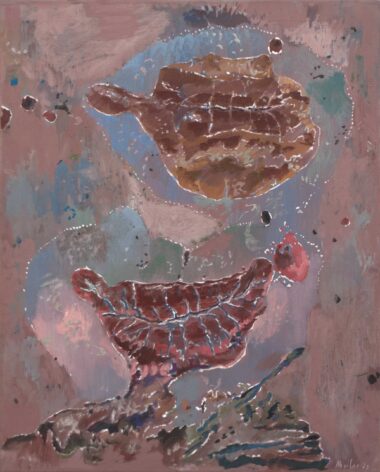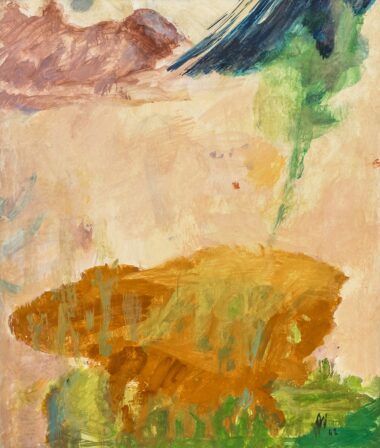Max WEILER was born on August 27, 1910 in Absam near Hall in Tirol. From 1930 to 1937 he studied painting at the Academy of Fine Arts in Vienna (Karl Sterrer’s master class). In 1937 he received a state scholarship from the Academy, which enabled him to spend a year in Rome. Further scholarship and work stays, among others to Paris, Florence, Umbria, Belgium, Positano, Mexico, the Caribbean, Kenya, and the Indian Ocean followed. In 1990 Weiler made his first trip to the USA. During the Second World War the artist worked as an assistant teacher. From 1942 to 1945 he was drafted into service with the German Wehrmacht. In 1964, Weiler was appointed full professor at the Academy of Fine Arts, where he retired in 1981. In 1967, he was also appointed to the Austrian Art Senate. Numerous exhibitions at home and abroad paid tribute to Max Weiler’s artistic work. His extensive work includes landscapes, still lifes, portraits, sgraffiti, mosaics, glass paintings and ceramic murals (often in public spaces). The artist took part in biennials in São Paulo and Venice from 1950 and received numerous awards and honors, including the silver medal of the Austrian art exhibition in Vienna (1947), the prize of the Austrian graphic competition in Innsbruck (1952), the Austrian decoration of honor for science and art (1979), the Tyrolean State Prize for Art, the Ring of Honor of the City of Hall in Tirol and the Golden Medal of Honor of the Federal Capital Vienna (1987). In 1995, Max Weiler became an honorary member of the Academy of Fine Arts in Vienna and was awarded the Grand Decoration of Honor in Silver with a Star for Services to the Republic of Austria. This was followed in 2000 by the Grand Decoration of Honor in Gold with a star for services to the Republic of Austria. Max Weiler died on January 29, 2001 in Vienna. On April 1, 2003, Max-Weiler-Platz in Vienna-Leopoldstadt was named after the artist. 1961 — first exhibition participation, 1988 — first solo exhibition at Galerie Welz.
Max WEILER was born on August 27, 1910 in Absam near Hall in Tirol. From 1930 to 1937 he studied painting at the Academy of Fine Arts in Vienna (Karl Sterrer’s master class). In 1937 he received a state scholarship from the Academy, which enabled him to spend a year in Rome. Further scholarship and work stays, among others to Paris, Florence, Umbria, Belgium, Positano, Mexico, the Caribbean, Kenya, and the Indian Ocean followed. In 1990 Weiler made his first trip to the USA. During the Second World War the artist worked as an assistant teacher. From 1942 to 1945 he was drafted into service with the German Wehrmacht. In 1964, Weiler was appointed full professor at the Academy of Fine Arts, where he retired in 1981. In 1967, he was also appointed to the Austrian Art Senate. Numerous exhibitions at home and abroad paid tribute to Max Weiler’s artistic work. His extensive work includes landscapes, still lifes, portraits, sgraffiti, mosaics, glass paintings and ceramic murals (often in public spaces). The artist took part in biennials in São Paulo and Venice from 1950 and received numerous awards and honors, including the silver medal of the Austrian art exhibition in Vienna (1947), the prize of the Austrian graphic competition in Innsbruck (1952), the Austrian decoration of honor for science and art (1979), the Tyrolean State Prize for Art, the Ring of Honor of the City of Hall in Tirol and the Golden Medal of Honor of the Federal Capital Vienna (1987). In 1995, Max Weiler became an honorary member of the Academy of Fine Arts in Vienna and was awarded the Grand Decoration of Honor in Silver with a Star for Services to the Republic of Austria. This was followed in 2000 by the Grand Decoration of Honor in Gold with a star for services to the Republic of Austria. Max Weiler died on January 29, 2001 in Vienna. On April 1, 2003, Max-Weiler-Platz in Vienna-Leopoldstadt was named after the artist. 1961 — first exhibition participation, 1988 — first solo exhibition at Galerie Welz.








Recent Comments